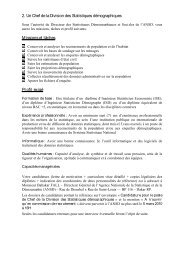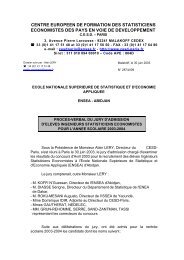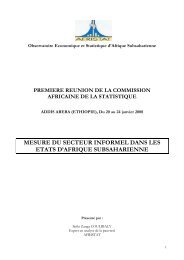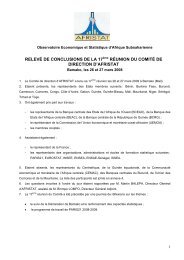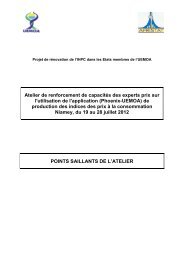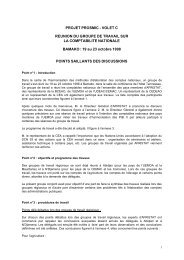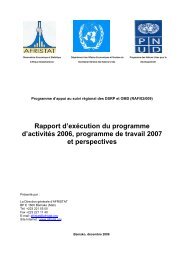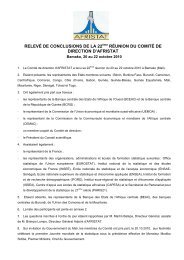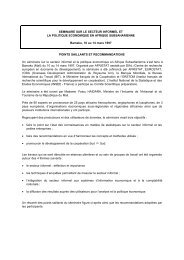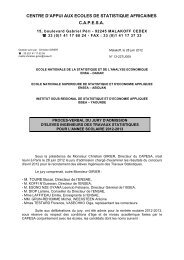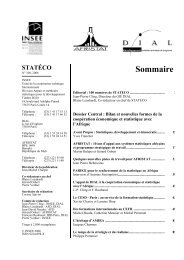Global Purchasing Power Parities and Real Expenditures - Afristat
Global Purchasing Power Parities and Real Expenditures - Afristat
Global Purchasing Power Parities and Real Expenditures - Afristat
Create successful ePaper yourself
Turn your PDF publications into a flip-book with our unique Google optimized e-Paper software.
Appendix EEstimating Average Pricesfor Household ConsumptionItems of ChinaIn China, ICP price surveys, conducted by the NationalBureau of Statistics of China (NBS), for household consumptionitems covered the 11 municipalities of Beijing,Shanghai, Ningbo, Qingdao, Guangzhou, Xiamen, Dalian,Harbin, Wuhan, Chongqing, <strong>and</strong> Xi’an. Data were collectedfrom outlets in both the cities proper <strong>and</strong> surroundingareas. However, the computation of purchasing powerparity (PPP) data requires both average prices <strong>and</strong> GDPweights at the national level. The Asian Development Bank(ADB) convened an expert group 8 on June 19–20, 2006,to develop a procedure for extrapolating the data from the11 municipalities to the national level. The expert groupagreed on the following steps:m Average prices for each of the 11 cities proper <strong>and</strong>,separately, the surrounding areas were computed atthe product level by NBS <strong>and</strong> submitted to ADB.However, the national annual average prices are notofficial estimates of the NBS, but were computed bythe ADB <strong>and</strong> the World Bank.m Per capita household expenditures by nine expenditurecategories 9 were derived from China urban <strong>and</strong>rural household income <strong>and</strong> expenditure surveys,<strong>and</strong> population data for urban <strong>and</strong> rural areas for all31 provinces of China were taken from the ChinaStatistical Yearbook (2007).m A principal-components analysis of urban <strong>and</strong> ruralper capita household expenditure structures of themmmm31 provinces in China was used to group them intofour analytical clusters: Capitals, Coastal, Northeast,<strong>and</strong> Inner China. Each of the 11 municipalities isincluded in only one of the four analytical clusters.Weights for the eight expenditure categories fromeach of the urban <strong>and</strong> rural areas of the 31 provinceswere allocated to the corresponding average pricedata collected from the 11 municipalities within thefour analytical clusters.Using these weights, the average prices were estimatedfor each household consumption item. PPPsfor the basic headings in household consumptionwere calculated using these average prices.For government consumption expenditure, NBSalso provided data on compensation of governmentemployees for the 11 cities. However, because theChina Statistical Yearbook had national-level figuresfor government compensation, these figures wereused in estimating PPPs for both individual <strong>and</strong> collectiveconsumption.For gross fixed capital formation, prices for constructiongoods were collected for three cities only, <strong>and</strong>those for machinery <strong>and</strong> equipment were collectedin 11 cities in which the type of equipment could befound that matched the specifications. This is consistentwith methodology used in other economies <strong>and</strong>regions; thus, no extrapolation was required.181



